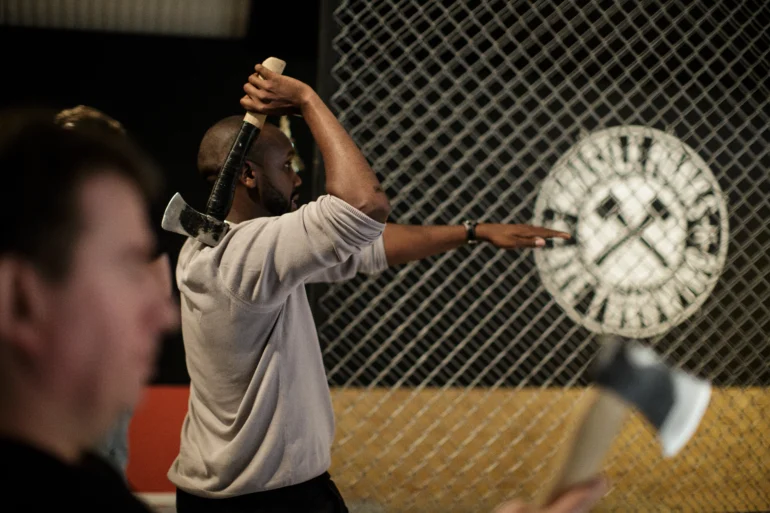Elsewhere in the world, different countries and cultures have their own ways of welcoming the summer, so let’s take a tour and embrace the wholesome, picturesque (and sometimes odd) global summer traditions.
Most summer traditions in the UK tend to revolve around the novelty of doing everything outside, giving ourselves sunburn while enjoying lukewarm tinnies in the local park and fending off mosquitos as we try not to burn the sausages.
Midsummer – Sweden
Anyone who has seen Ari Aster’s 2019 film ‘Midsommar’ has probably broken out in a cold sweat seeing that title. Thankfully, the real-life Scandinavian celebration is far less disturbing than the film.
Summer traditions in Sweden, typically a celebration of the start of the season, is focussed on socialising, eating, drinking, and the great outdoors.
Large and leisurely dinners of traditional foods like boiled potatoes and herring are washed down with plenty of aquavit, populated by friends and family from all over the country, and bonfires are lit across the country.
The Midsummer festival has been celebrated since the time of the Vikings, and the bonfires are a Pagan influence which continues to this day to ward off evil spirits.
If Pagan festivals seem a bit strange to you, let’s not forget that without them, our Christmas celebrations would be quite different.
Aomori Nebuta Matsuri Festival/Kappa Matsuri – Japan
This is a tantalising treat for tourists and locals alike, a huge festival held in Japan’s Aomori Prefecture in early August which is a pure delight for the senses.
The biggest draw of these summer traditions are the huge floating lanterns which are paraded through the streets, accompanied by music and dancers to create a spectacle arguably unmatched by any other nation.
Handcrafted in the shapes of all manner of figures from mythical creatures to TV series, the floats can be 9 metres long and take up to a whole year to make; that’s some real dedication for a festival that only lasts a week!
For a slightly more obscure Japanese summer festival, check out ‘Kappa Matsuri’: an event in honour of the mythical ‘Kappa’, a reptile-like creature who loves cucumbers, sumo wrestling, and stealing people’s souls.
Just don’t ask where they think your soul is kept.
Ghost Festival – China
Imagine celebrating Halloween in summer, and you’re somewhere close to China’s Ghost Festival.
Held on the 15th night of the 7th month of the Chinese calendar, the gates between hell and earth are believed to open for a day and ghosts are free to enter the realm of the living.
This may sound heavy metal, but the spirits that come out are hungry, restless and needy, so the tradition in China is to provide food, drink and entertainment to appease these apoplectic apparitions.
Compared to Halloween, these summer traditions are centred more on remembrance, with paper notes and money being symbolically burned to help out lost loved ones.
La Tomatina – Spain
The last Wednesday in August may not sound particularly important, but it’s the best day of the year if you’re near Buñol in Valencia.
Alternatively, it’s the worst day of the year if you happen to be a tomato.
These summer traditions in Spain have been on the go since 1945, and begins a few days before with fireworks, music, and a paella contest.
Come Wednesday morning, the ‘Palo Jabón’ takes place, where a piece of ham is placed on top of a pole and people are encouraged to climb on each other to knock the ham off.
Once this falls, it acts as a starting pistol for the biggest food fight in the world.
The city centre becomes a mass of people and passata, as 20,000 participants chuck roughly 145,000 kg of tomatoes at each other. This may sound wasteful, but the citric acid from the tomatoes leaves the medieval brickwork very clean after being hosed off.
Solstice Bonfires – Austria
Setting fire to things seems to be one of the more popular summer traditions across the world, but the Brixental Mountain Fires decided to take it to a new level.
The people of Tirol in Austria show off the freshly cut Alpine hillsides not by lighting large bonfires, but using thousands of tiny torches to create large detailed symbols in the hillside, including coats of arms, words and almost anything else that takes their fancy.
We reckon a huge fiery axe would look incredible.
Summer Solstice at Stonehenge – England
Okay, so maybe we were being unfair to old Blighty earlier – we are also home to one of the oldest Pagan summer traditions of our own.
Whereas no one really knows what Stonehenge is, when it was built, or how they managed it, it has been a site of harmless rituals and spiritual gatherings for centuries.
In celebration of the summer solstice, the longest day of the year, thousands of people gather to watch the sunrise and collectively experience England’s biggest Instagram filter rise over these mammoth monoliths, before patiently waiting for the pub to open.
Wianki Festival – Poland
Poland’s answer to classic summer traditions of midsummer is the Wianki (or ‘Wreath’) festival.
As the name suggests, this gathering on the picturesque banks of the Vistula river focuses on handmade wreaths that are either worn or floated down the river, in the hopes that the maker’s dreams will come true.
It has also evolved over the years to include a large music festival alongside the classic summer tropes such as bonfires and indulging.
Rhein In Flammen – Germany
Another one of those summer traditions that sound like a metal band is Germany’s ‘Rhein In Flammen’, which translates to ‘Rhine In Flames’.
This summer tradition involves a series of fireworks and bonfires set off along the river Rhine from its various incredible castles. The displays are set at intervals to follow along by boat, and have the visual effect of the river being in flames – hence the name.
The finale of this pyrotechnic parade is at the massive Ehrenbreitstein, where the river Rhine meets the Moselle, which culminates in a classical concert – as well as a bit of a cool-off!



